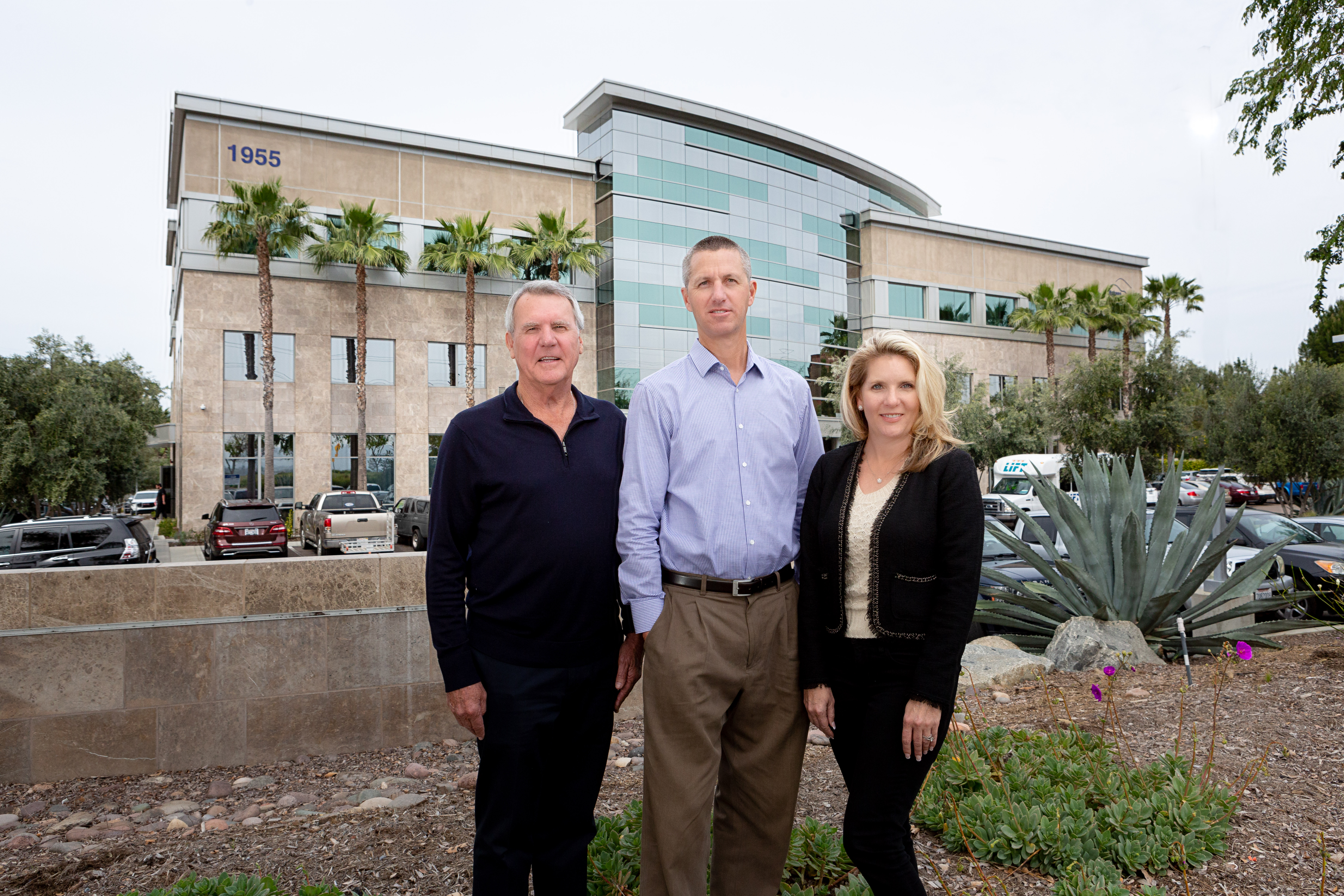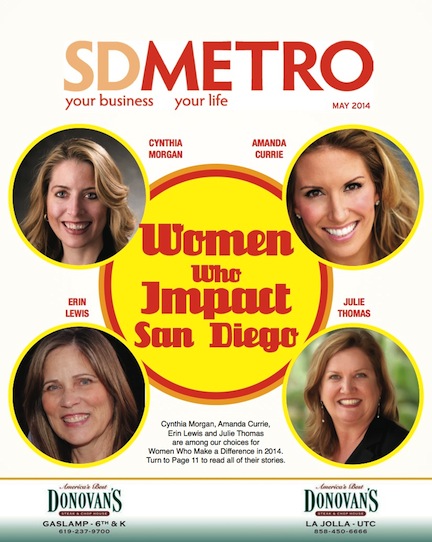San Diego Regional Chamber of Commerce inducts a ‘kick ass’ chairman to lead in 2010
Tom Wornham puts water, small business and the strong mayor form of government on his high priority list
By Manny Cruz
When a big man stands at a podium and says it’s time “to kick some ass and get moving again,” audiences tend to listen.
That would be Tom Wornham — 6 feet 4, 265 pounds — lighting a fire under members of the San Diego Regional Chamber of Commerce. He wants the chamber to take a lead role in helping solve critical problems facing the region.
The occasion was last month’s induction of Wornham as the chamber’s 2010 chairman, a pulpit from which he can throw his weight around, so to speak, seeking answers to a variety of issues, among them his three top priorities — ensuring an adequate water supply for San Diego County, improving the climate for small businesses and continuing the strong mayor form of government in the city of San Diego.
Wornham can be blunt when he deems it necessary. On water, for example, he says, “We don’t have water, we’re absolutely screwed.”
Wornham, 49, is an executive vice president and regional manager for the Wells Fargo Regional Commercial Banking Office (RCBO) in San Diego. His affiliation with Wells Fargo dates back to the early 1980s, after he obtained a bachelor’s degree in political science and international relations from Cal, the University of California, Berkeley. He joined the bank as a teller in 1982, attended the company’s Credit Management Training Program and was promoted to vice president of the San Diego RCBO in 1986. After a series of other assignments, Wornham assumed his current position in 1999 and was promoted to executive vice president in 2003.
He is immediate past chairman the San Diego Regional Economic Development Corp. and chairs the Century Club board of directors. He’s also co-chair of the San Diego Championship Golf Association. Three years ago, Mayor Jerry Sanders appointed him to the San Diego County Water Authority, where he currently serves as secretary of the board.
Wornham and his wife, JoAnn, have two sons. Tommy is a sophomore at Princeton University and is starting quarterback on its football team. John is a junior at Torrey Pines High School and plays varsity football. Wornham played varsity football, baseball, basketball and cross-country at The Bishop’s School in La Jolla. He says his baseball career never got started at Cal (as a pitcher) because he blew his knee out playing football during an intramural game. Wornham, however, is an avid golfer.
The person Wornham admires most: Teddy Roosevelt. The banker’s favorite quote: “If you want to make God laugh, just tell him your plans.”
Ruben Barrales, president and CEO of the chamber, with whom Wornham must work, is an admirer. “Nobody cares more about San Diego than Tom Wornham,” says Barrales. “He want to do whatever he can to make San Diego a better place.”
During a recent interview, Wornham was asked to comment on a variety of issues.
Q. Tell us about our water problem.
A. I hope people will understand that we’re working off of a conveyance system up in the Delta that was built 100 years ago by immigrant labor. These deltas, they have a levy system that would make the Ninth Ward levy system in New Orleans look like it was revolutionary technology. This levy system that we have in the Delta is largely earthen and mud, and a lot of it can’t even sustain a 1.2 or a 1.4 seismic event. So, it’s a race against time. And it’s not working for the ecosystem or for the water conveyors. So until we get that fixed, this is a very very fragile water conveyance system… And we’re at the end of the hose, so we’re the ones that are going to be impacted the most. That’s why it’s so big on my agenda.
Q. What’s the answer for San Diego?
A. It is going to be the passage of a water bond that will be significant in scope and size. It’s got to be 10 to 12 billion dollars (actually, an $11.14 billion water bond set for the November ballot), but it’s got to be money that works on fixing the Delta so that you save fish and provide for a water conveyance system that is reliable. And you make the conveyance system up and down the state more reliable. The answer for us in San Diego while we do that is to make sure that we have adequate storage. We’re supersizing the San Vicente Dam as we speak. We have the desalination (plant) coming out of Carlsbad. That’s 55,000 gallons a day. Then we have the water coming in from the Imperial Valley… It’s going to be an accumulation of all of that.
Q. What prompted you to get involved in the chamber?
A. The chamber reaches out to a lot of businesses. It’s really the grassroots. The chamber does a lot of really good things. You look at a period of impact. The two years I spent chairing EDC we reinvented EDC. You have to start every organization by asking, “If you weren’t here, who would miss you?” And until you can answer that question you’ve got a problem…The chamber does a really good job getting folks motivated and activated. But we need to do a good job of making sure we are answering the needs of the small business owner. So at the same time that we are pushing an agenda that is good for, I hope, all in the region, we have to listen to what people need.
Q. Has the chamber grown in the economy or has it lost membership?
A. It’s holding its own. I’d be lying if I said we’re not feeling the same financial challenges everybody else is. It’s a pivotal year. We need to make sure that we’re addressing the small business needs and at the same time providing enough events that are of interest to people.
Q. Your position on keeping the strong mayor form of government?
A. The form of governance is so much better than what we had before. I would argue that when we had the city manager form of government, that’s what got us into a lot of the trouble that we have today. And that’s not a slam on any former city manager. So I think we need to figure out where our problems started and there’s less of chance of it starting with this form of government.
Q. The chamber is going to go all out to promote the strong mayor issue?
A. We are. We have a natural sort of group that should cross political boundaries and come together and coalesce on this. My hope this year is that we can take San Diego as a region and focus everybody’s attention on the 70 percent of things we agree on, not the 30 percent we don’t.
Q. How much money has the chamber put into the strong mayor campaign?
A. I don’t think you’ll see a dime coming out of the chamber. We’re not designed to be throwing money into campaigns.
Q. Will the chamber get involved in local political races?
A. There will be some interaction by some of our members. I would be surprised to see us, as an organization, endorse.
Q. What can the chamber do to help small business?
A. I think the fine balance here is that you don’t dictate as a state or as a region (putting) the employer at a competitive disadvantage and end up wiping out jobs. The nightmare scenario is that when you’re in a region that is not competitive, you end up losing more jobs. That’s not the answer.
Q. What is your take on the Chargers finding a new home?
A. This is only personal. I’m not involved in any conversations. I would take the (Alex) Spanos family at their word. I do not believe theyt want to leave San Diego. If we were to lose the Chargers, we would lose a huge regional asset. I would like to see us figure out a way we could get them Downtown. There’s a couple of things I like about Downtown. One, the infrastructure is already there. There’s rails there and parking, to a large degree, is there. It’s the easiest plug-in power…I understand there are some environmental issues on the cleanup (of a Downtown site), but I believe those conversations are ongoing and there’s some money there now.
The biggest thing we can do is not get in the way. This whole process has often been messed up by too many cooks in the kitchen.
Q. On the labor front, how do you overcome organized labor’s suspicions about the Chamber of Commerce, a business organization?
A. We have every intention of reaching out to labor and having honest dialogues, but there will always be disagreements.
Q. Lorena Gonzalez, secretary-treasurer/CEO of the San Diego and Imperial Counties Labor Council, AFL-CIO — is she an exceptional woman?
A. She is. And I’m very optimistic that we can work together on the 70 percent that we agree on and not get bogged down on the 30 percent that we disagree on. There will be issues we disagree on. And we will — I’m hoping we will — be able to have a civil discourse on that. In the final analysis, labor exists for a reason. Business exists for a reason. But they can’t exist without each other. And if I look back on the history of labor in the United States the last 100 years, the pendulum continues to swing right and left.
So when business is treating labor unfairly, the pendulum will always swing towards labor. When labor is getting too strong in their positions, the pendulum will swing back towards business. So if we can do a decent job of making sure that pendulum is balanced and fair — again by treating this as a region where everyone has one equal share in the success or failure — I think that will limit the amount of time we spend bickering back and forth.




